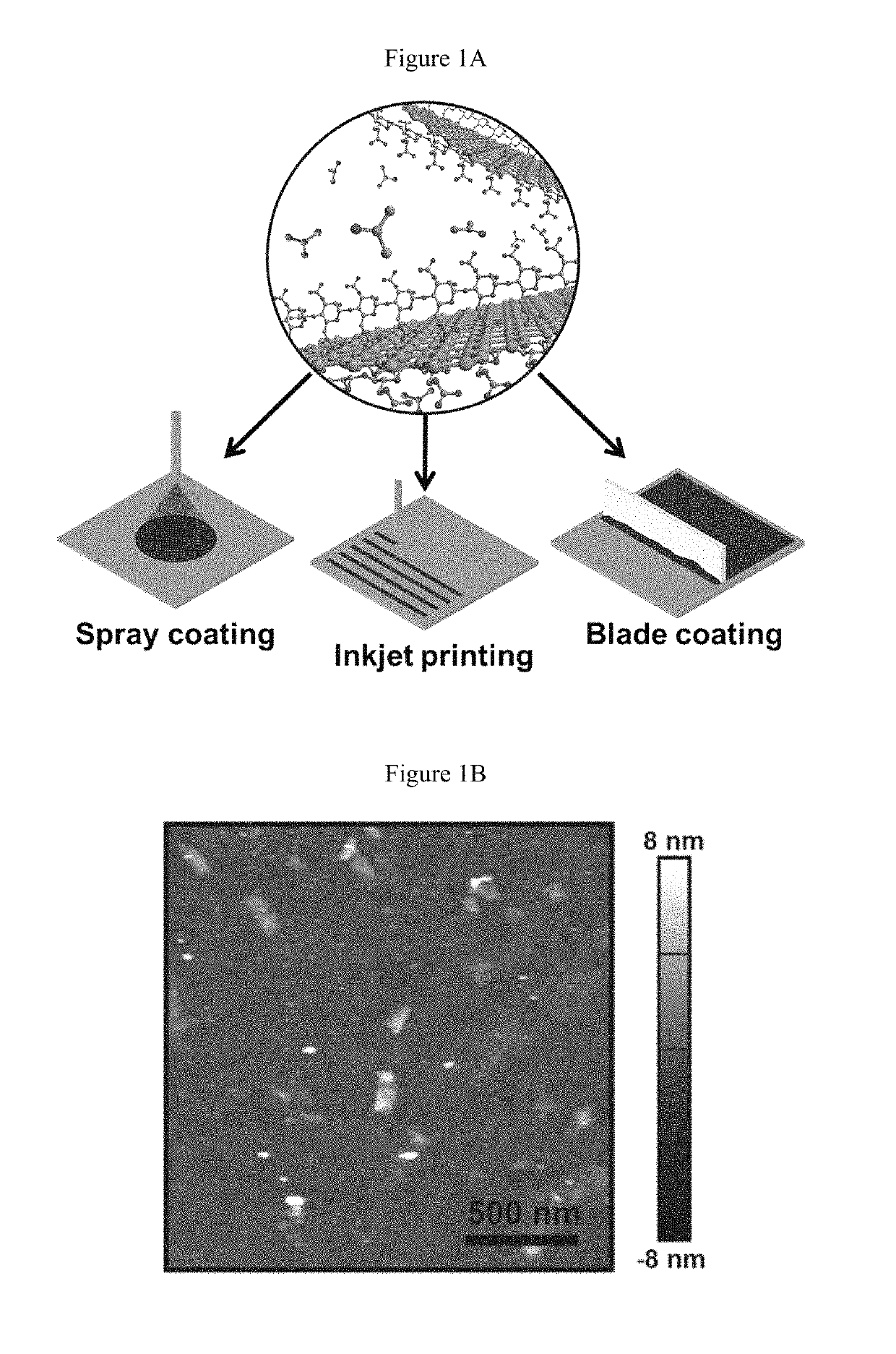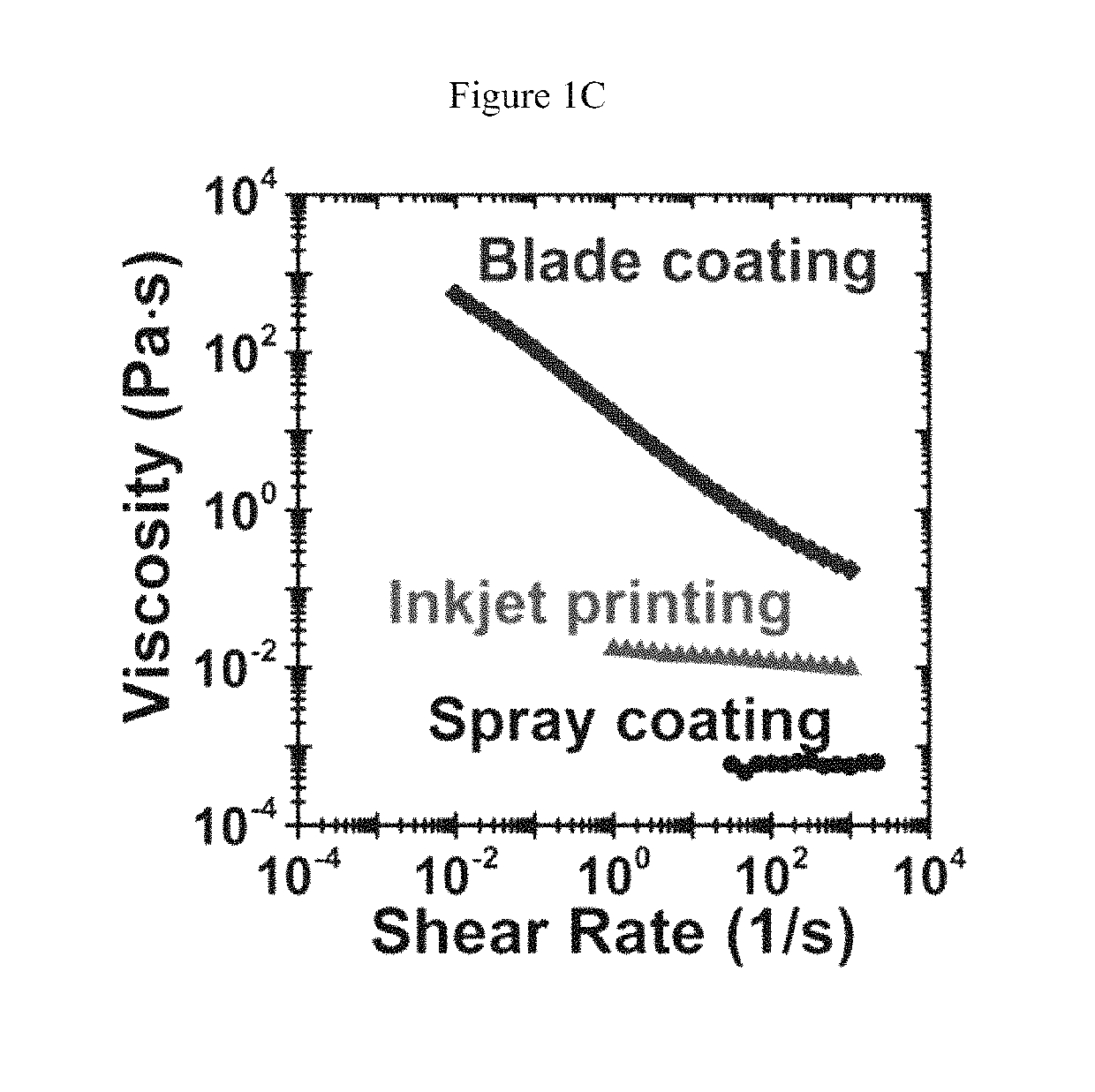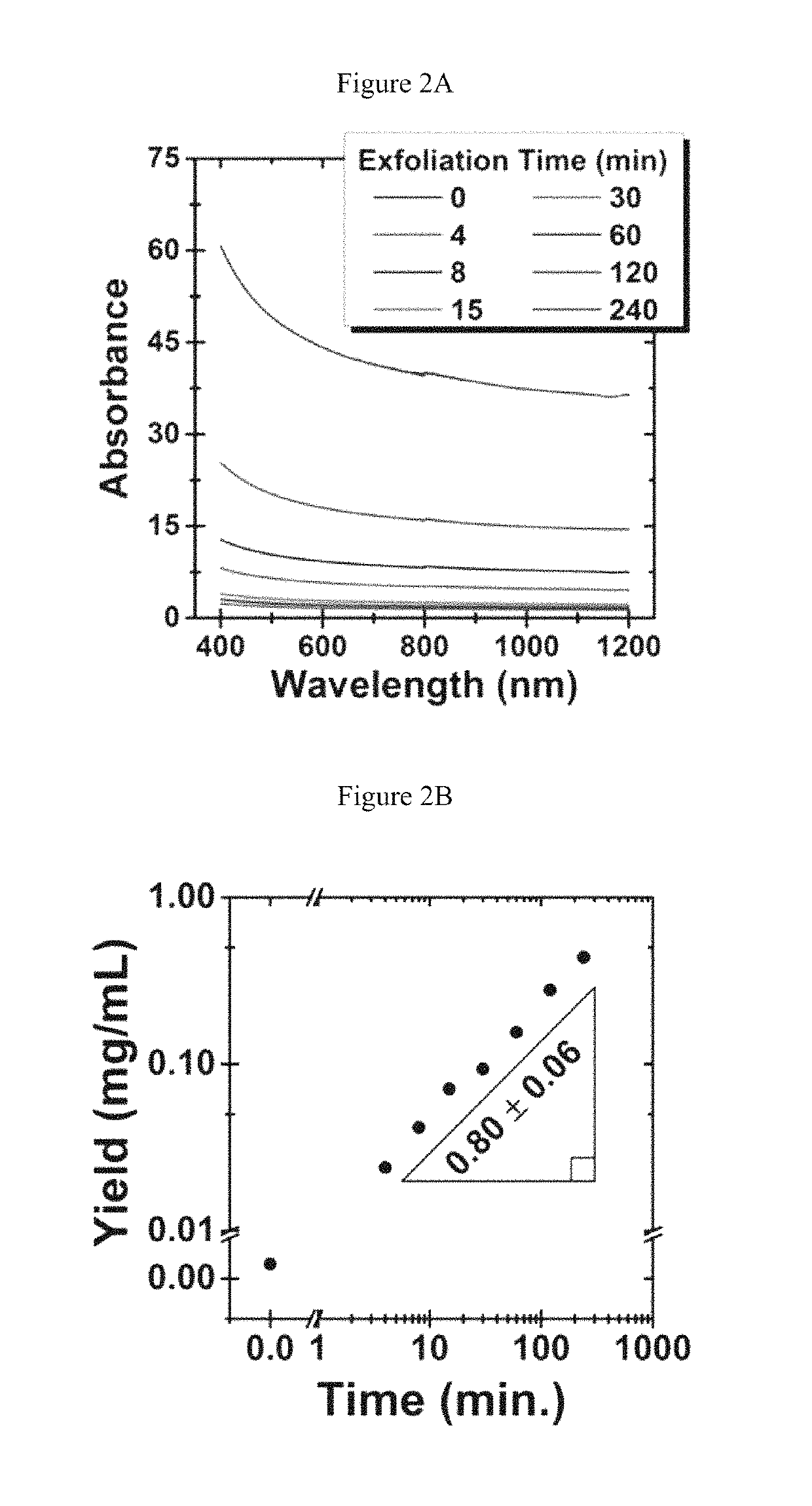Enhanced conductivity, adhesion and environmental stability of printed graphene inks with nitrocellulose
a graphene ink and nitrocellulose technology, applied in the incorporation of printed capacitors, coatings, inks, etc., can solve the problems of inability to demonstrate graphene inks that simultaneously offer high electrical conductivity, strong substrate adhesion, and robust environmental stability
- Summary
- Abstract
- Description
- Claims
- Application Information
AI Technical Summary
Benefits of technology
Problems solved by technology
Method used
Image
Examples
example 1
[0068]Liquid-Phase Exfoliation and Processing of Graphene.
[0069]Graphene is exfoliated from natural graphite flakes using a high-shear rotor-stator mixer (Silverson L5M-A) with a square hole high shear screen. Nitrocellulose (NC) (Scientific Polymer, Cat. #714) is dissolved in acetone (Sigma-Aldrich, ACS Reagent Grade) at a concentration of 10 mg / mL. (A typical lab-scale batch contains ˜1 L of the exfoliation mixture.) 150 mg / mL of graphite flakes (Asbury Graphite Mills, Grade 3061) is added to the NC solution and shear mixed for 4 hours at 10,230 rpm, with an ice bath employed to cool the mixture. The resulting mixture is then centrifuged (Beckman Coulter Avanti J-26 XPI centrifuge) in two steps, first at 5,000 rpm for 15 minutes, then 6,000 rpm for 20 minutes, to remove large graphite flakes. Following collection of the supernatant, an aqueous salt solution (0.04 g mL−1 NaCl, Fisher BioReagents) is added to the supernatant in 78:22 ratio by weight, and centrifuged at 7,500 rpm for...
example 2a
[0070]Ink Preparation and Deposition.
[0071]For inkjet printing, graphene / NC powder is directly dispersed in a solvent system of 75:15:10 ethyl lactate / octyl acetate / ethylene glycol diacetate (Sigma Aldrich) by bath sonication, with a solids loading of 2.3% w / v (˜10 mg / mL graphene). (For inkjet printing, graphene concentration can be, without limitation, about 5-about 10 mg / mL or, more generally, about 2-about 20 mg / mL.) Inkjet printing is performed with a Ceradrop X-Serie inkjet printer equipped with a Dimatix 10-pL cartridge (DMC-11610). During printing, the substrate and cartridge nozzle plate are held at 35 and 32° C., respectively.
example 2b
[0072]For spray coating, graphene / NC powder is dispersed in a solvent system of 80:20 acetone / ethyl lactate at a concentration of 5 mg / mL. (Alternatively, for spray coating, graphene concentration can be, without limitation, about 1-about 3 mg / mL or, more generally, as high as about 10-about 20 mg / mL.) Spray coating is carried out with a gravity feed spray gun (TCP Global F3-SET, 1.0 mm nozzle). Spraying is performed at a distance of 15 cm from the substrate, with a pressure of ˜200 kPa. The substrate is fixed on a hotplate at 100° C. during coating.
PUM
| Property | Measurement | Unit |
|---|---|---|
| concentration | aaaaa | aaaaa |
| concentration | aaaaa | aaaaa |
| temperature | aaaaa | aaaaa |
Abstract
Description
Claims
Application Information
 Login to View More
Login to View More - R&D
- Intellectual Property
- Life Sciences
- Materials
- Tech Scout
- Unparalleled Data Quality
- Higher Quality Content
- 60% Fewer Hallucinations
Browse by: Latest US Patents, China's latest patents, Technical Efficacy Thesaurus, Application Domain, Technology Topic, Popular Technical Reports.
© 2025 PatSnap. All rights reserved.Legal|Privacy policy|Modern Slavery Act Transparency Statement|Sitemap|About US| Contact US: help@patsnap.com



